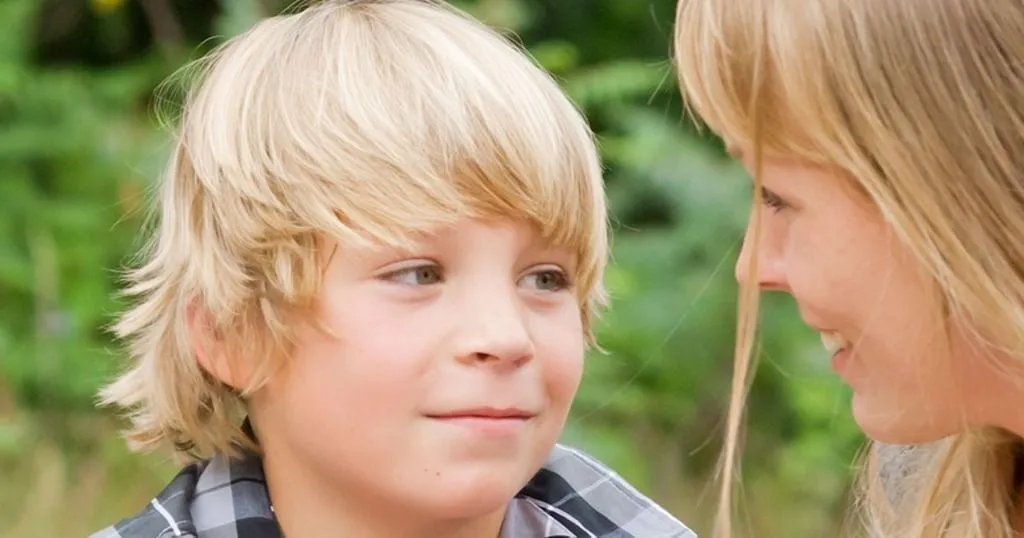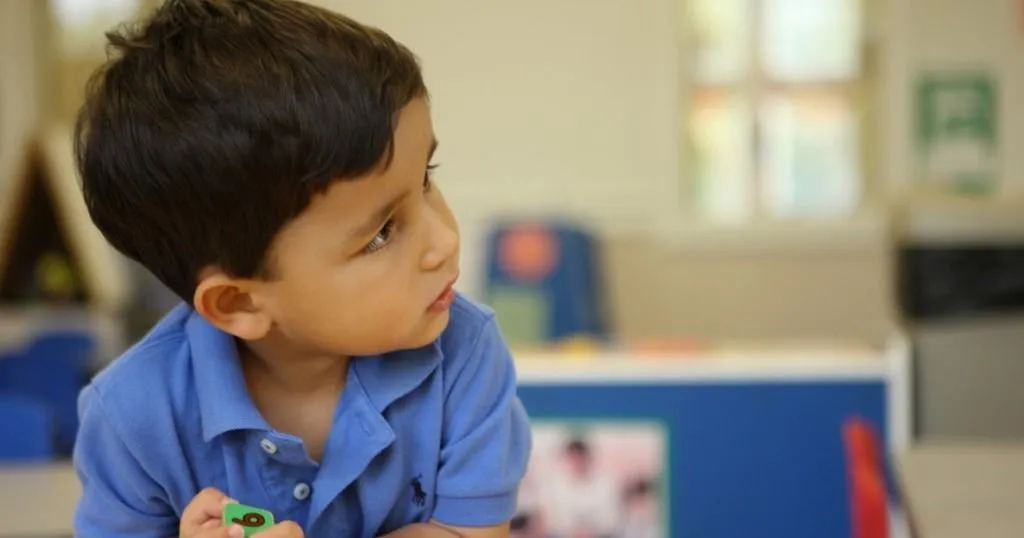Investigating facial expressions in autism and borderline personality disorder
Within two specific populations researchers investigated the role of facial expressions on social interactions.
Posted by
Published on
Thu 24 Jun. 2021
Topics
| Autism | Emotions | FaceReader | Facial Expression Analysis | Social Interaction | Developmental Disorder |

This blog post is a guest post by Dr. Stephanie Van der Donck and Prof. Dr. Bart Boets of the Center for Developmental Psychiatry of the KU Leuven in Belgium.
Facial mimicry in children with autism spectrum disorder
Facial mimicry, which can be defined as the unintended, unconscious reproduction of the facial expressions of the interaction partner1, plays an important role in social interactions. It has been found to facilitate affiliation between interaction partners2, foster affective and cognitive empathy towards each other3, and boost prosocial behavior4.
However, this natural tendency to automatically mimic the facial expressions of the interaction partner may lack in individuals with autism spectrum disorder (ASD)5,6, who are characterized by deficits in social communication and interaction7.
Although contradicting findings have been observed8,9, previous studies have reported reduced or delayed automatic facial mimicry in adults10,11 and children12,13 with ASD as compared to controls. Given that numerous studies have suggested that spontaneous facial mimicry is associated with emotion recognition performance14,15, impairments in facial mimicry in ASD may contribute to difficulties with emotion recognition.
Observing and analyzing facial expressions
In previous studies16,17, we observed that, despite equal emotion recognition performances, the brains of children with ASD were less sensitive to rapidly and implicitly detect angry and fearful faces, as compared to typically developing (TD) controls. Therefore, we wanted to broaden our understanding of possible underlying differences in facial emotion processing mechanisms. We investigated spontaneous facial mimicry of 20 boys with ASD and 20 matched TD boys while performing a facial expression recognition task.
More specifically, we explored whether boys with ASD differed in the extent of their facial mimicry while processing expressive face stimuli, in comparison to TD controls, by analyzing video recordings of the participants’ concurrent facial expressions using FaceReaderTM software.
As an index of facial mimicry, we expected that a particular expression displayed on the screen (i.e. one of the six basic expressions: anger, fear, happiness, disgust, sadness, surprise) would elicit congruent facial expressions on the participants’ faces. Our results suggested the absence of facial mimicry in both participant groups18.
The intensity values of all expressions were very low, except for the neutral facial expression. This combination of high neutral scores and low expressive scores indicated little variation in the participants’ facial expressions, and, accordingly, no mapping between the observed and produced facial expressions.
Transparency estimation in women with borderline personality disorder features
Another key component of social interactions is mentalizing (i.e. the ability to reflect on the internal mental states of self and others). Similar to individuals with ASD, individuals with borderline personality disorder (BPD), who are characterized by self- and interpersonal dysfunction, among others7, display profound difficulties in mentalizing19.
These impairments in mentalizing with regard to the self and others may hamper their capacity for transparency estimation (i.e. the ability to estimate the extent to which one’s own mental states are observable to others20). This estimation requires awareness of one’s own mental state and processing of the internal information associated with bodily signals through which the mental state may be communicated to others (i.e. mentalizing of the “self”).
It also requires the ability to take a third-person perspective on the self in order to gauge how one is perceived by others (i.e. mentalizing of the “other”)21. These two processes are often impeded in individuals with BPD.

(Un)Awareness of communicative bodily signals
These mentalizing impairments may lead to transparency over- or underestimation. For example, the enhanced salience of their self-experience (e.g. feelings of shame) may lead individuals with BPD to overestimate the transparency of these experiences22. However, reduced awareness of signals arising from within the body23 may lead them to assume that these states are not transparent, when they may in fact be communicating mental states through various bodily signals, resulting in an underestimation of their transparency21.
Likewise, difficulties with third-person perspective taking on the self may lead individuals with BPD to overestimate the transparency of their mental states when their own experience is highly salient to themselves, and to underestimate their transparency when they are unaware of their own mental state and of their communicative bodily signals21.
Measuring the actual intensity of facial expressions
In the study of De Meulemeester et al.21, we investigated the capacity for transparency estimation in individuals high and low in BPD features by presenting a series of emotion-eliciting movie clips to the participants, while filming their reactive facial expressions. After each clip, participants estimated how transparent their emotional experience was while watching the particular clip. In addition, the observable transparency (i.e. how observable their mental states in fact are to others) of the participants’ emotional experience was defined as the actual intensity of their facial emotional expressions, measured via FaceReader software.
Results showed that individuals high in BPD features were less able to gauge how much of their emotional experience is observable to others through their facial expressions. Those who estimated their transparency to be high were not objectively more transparent, indicative of transparency overestimation21.
Similarly, those who judged the transparency of their emotional experience to be low did not exhibit less intense facial emotion expressions during the task, showing transparency underestimation. On the contrary, high levels of experienced transparency in individuals without BPD features were effectively associated with higher intensity levels of facial expressions, across all movie-clips21.
This impaired transparency estimation in individuals high in BPD features that is expressed in two directions (overestimating and underestimating their transparency) demonstrates that they are less able to represent their embodied selves from the perspective of others21.
References
1. Duffy, K. A. & Chartrand, T. L. Mimicry: Causes and consequences. Curr. Opin. Behav. Sci. 3, 112–116 (2015).
2. Kavanagh, L. C. & Winkielman, P. The functionality of spontaneous mimicry and its influences on affiliation: An implicit socialization account. Front. Psychol. 7, 1–6 (2016).
3. Drimalla, H., Landwehr, N., Hess, U. & Dziobek, I. From face to face: the contribution of facial mimicry to cognitive and emotional empathy. Cogn. Emot., 1–15 (2019).
4. Van Baaren, R. B., Holland, R. W., Kawakami, K. & Van Knippenberg, A. Mimicry and Prosocial Behavior. Psychol. Sci. 15, 71–74 (2004).
5. Moody, E. J. & McIntosh, D. N. Micmicry and Autism: Bases and Consequences of Rapid, Automatic Matching Behavior. Imitation and the social mind: Autism and typical development (eds. Rogers, S. & Williams, J.) 71–95 (Guilford Press, 2006).
6. Vivanti, G. & Hamilton, A. Imitation in Autism Spectrum Disorders. Handbook of Autism and Pervasive Developmental Disorders (eds. Volkmar, F. R., Paul, R., Rogers, S. J. & Pelphrey, K. A.) 278–302 (John Wiley & Sons, Inc, 2014).
7. American Psychiatric Association. Diagnostic and Statistical Manual of Mental Disorders (Dutch version). (Uitgeverij Boom, 2014).
8. Deschamps, P. K. H., Coppes, L., Kenemans, J. L., Schutter, D. J. L. G. & Matthys, W. Electromyographic Responses to Emotional Facial Expressions in 6–7 Year Olds with Autism Spectrum Disorders. J. Autism Dev. Disord. 45, 354–362 (2013).
9. Schulte-Rüther, M. et al. Intact mirror mechanisms for automatic facial emotions in children and adolescents with autism spectrum disorder. Autism Res. 10, 298–310 (2017).
10. Mathersul, D., McDonald, S. & Rushby, J. A. Automatic facial responses to briefly presented emotional stimuli in autism spectrum disorder. Biol. Psychol. 94, 397–407 (2013).
11. Yoshimura, S., Sato, W., Uono, S. & Toichi, M. Impaired Overt Facial Mimicry in Response to Dynamic Facial Expressions in High-Functioning Autism Spectrum Disorders. J. Autism Dev. Disord. 45, 1318–1328 (2015).
12. Beall, P. M., Moody, E. J., McIntosh, D. N., Hepburn, S. L. & Reed, C. L. Rapid facial reactions to emotional facial expressions in typically developing children and children with autism spectrum disorder. J. Exp. Child Psychol. 101, 206–223 (2008).
13. Oberman, L. M., Winkielman, P. & Ramachandran, V. S. Slow echo: Facial EMG evidence for the delay of spontaneous, but not voluntary, emotional mimicry in children with autism spectrum disorders. Dev. Sci. 12, 510–520 (2009).
14. Borgomaneri, S., Bolloni, C., Sessa, P. & Avenanti, A. Blocking facial mimicry affects recognition of facial and body expressions. PLoS One 15, (2020).
15. Lakin, J. L. Behavioral mimicry and interpersonal synchrony. Nonverbal Communication (eds. Hall, J. H. & Kapp, M. L.) 539–575 (De Gruyter Mouton, 2013). doi:10.1515/9783110238150.
16. Van der Donck, S. et al. Fast Periodic Visual Stimulation EEG Reveals Reduced Neural Sensitivity to Fearful Faces in Children with Autism. J. Autism Dev. Disord. 49, 4658–4673 (2019).
17. Van der Donck, S. et al. Rapid neural categorization of angry and fearful faces is specifically impaired in boys with autism spectrum disorder. J. Child Psychol. Psychiatry 61, 1019–1029 (2020).
18. Van der Donck, S. et al. Investigating automatic emotion processing in boys with autism via eye tracking and facial mimicry recordings. Autism Res. (2021) doi:10.1002/aur.2490.
19. Luyten, P., De Meulemeester, C. & Fonagy, P. The Self–Other Distinction in Psychopathology: Recent Developments from a Mentalizing Perspective. The Neural Basis of Mentalizing (eds. Gilead, M. & Ochsner, K. N.) 659–680 (Springer, 2021). doi:10.1007/978-3-030-51890-5_34.
20. Gilovich, T., Savitsky, K. & Medvec, V. H. The Illusion of Transparency: Biased Assessments of Others’ Ability to Read One’s Emotional States. J. Pers. Soc. Psychol. 75, 332–346 (1998).
21. De Meulemeester, C., Lowyck, B., Boets, B., Van der Donck, S. & Luyten, P. Do my emotions show or not? Problems with transparency estimation in women with borderline personality disorder features. Personal. Disord. Theory, Res. Treat. (2021) doi:10.1037/per0000504.
22. Peters, J. R. & Geiger, P. J. Borderline Personality Disorder and Self-Conscious Affect: Too Much Shame But Not Enough Guilt? Personal. Disord. Theory, Res. Treat. 7, 303–308 (2016).
23. Löffler, A., Foell, J. & Bekrater-Bodmann, R. Interoception and Its Interaction with Self, Other, and Emotion Processing: Implications for the Understanding of Psychosocial Deficits in Borderline Personality Disorder. Curr. Psychiatry Rep. 20, (2018).
Dr. Stephanie Van der Donck, Center for Developmental Psychiatry, Katholieke Universiteit Leuven, Belgium ([email protected])
Prof. Dr. Bart Boets, Center for Developmental Psychiatry, Katholieke Universiteit Leuven, Belgium ([email protected])
Related Posts

Three examples of autism research studies

Become and stay aware about children with autism


